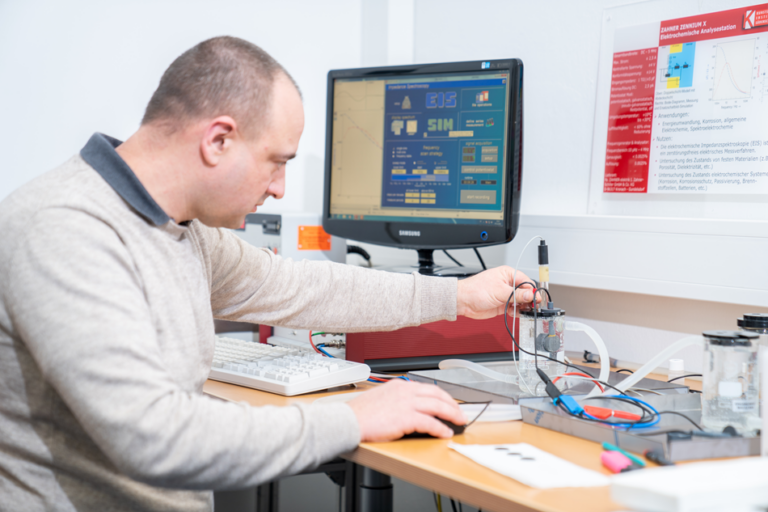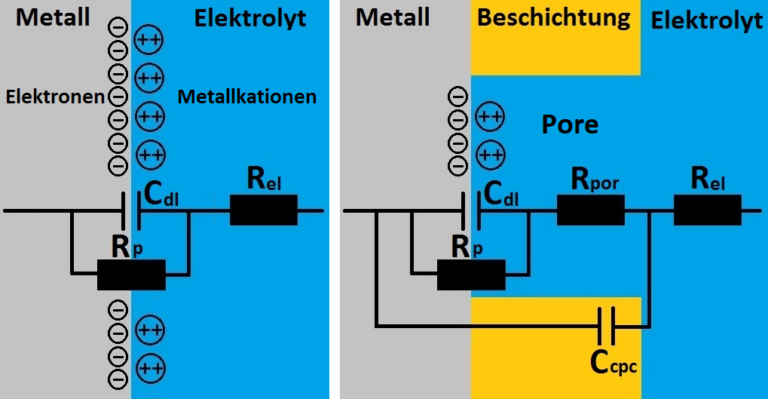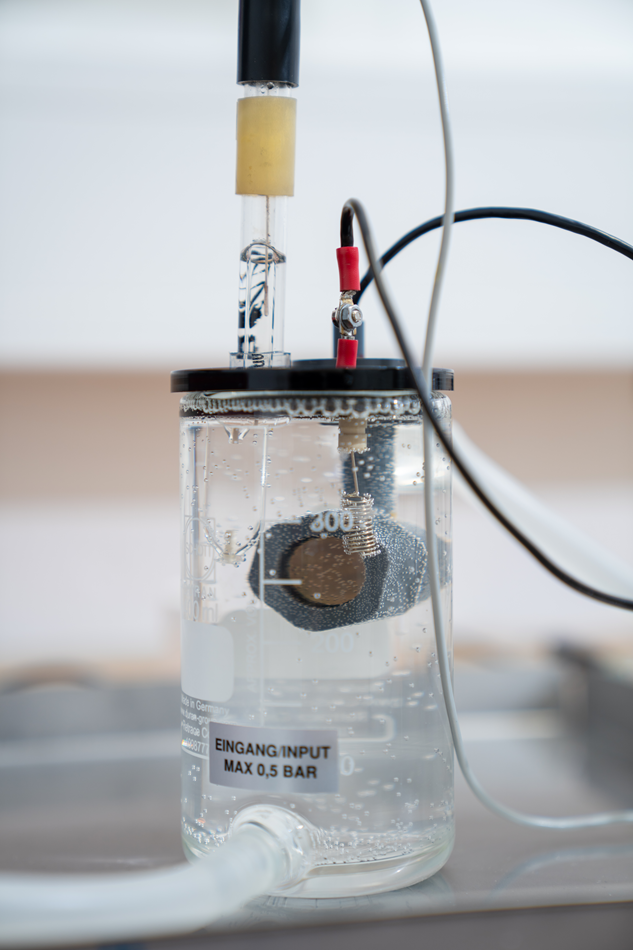The EIS is a non-destruktive analysis method to characterize the response of a system to the applied ripple current capabilites. Each system as well as each process can be described and modelled with a combination of resistances, capacities and inductivities. EIS allows a survey of condition of solid materials as well as the analysis of processes like Korrosion, passivation, fuel cells, batteries). With the modelled equivalent circuit, for example a corrosion process can be described and the corrosion resistance can therefore directly be taken from the measurement values.
Add to favorites:
Share:
Listing Description
Offer Details
Specifications and Deliverables:
The measurement values can be visualized in a Bode-Diagramm showing the Phase in degrees and the impedance in ohm. The characteristics of the curve contain information about the descrete elementes of the system such as the resistance of the electrolyte, the resistance of the pores as well as about corrosion processes and the beviour of the coatings within the liquid electrolyte.
Value Proposition:
By using the EIS a better understanding of the electrochemical system ist possible. For example you can judge if a newly developed coating is dense and free of pores, so that a long term corrosion protection might be realized. Moreover one can also detect the porosity of the coatings and measure the resistance. In so doing one can meaure the conductivity of the system.
Input Required from Customer:
Fields of Application:
Patent/Publication Number
Main Patent Claims:
Patent Family:
Video
Documents
No documents available.
Location and Map
Sorry, no records were found. Please adjust your search criteria and try again.
Sorry, unable to load the Maps API.
Adress:
Lüdenscheid
North Rhine-Westphalia
58507
Germany
Contact the listings owner
Connect with the Listing Owner!
💬 Please log in now to send a direct message to the listing owner. Not a member yet? Sign up for free and start connecting today!
Related Funding and Finance Opportunities
Unlock Exclusive Funding Opportunities!
🔑 Get instant access to tailored funding opportunities that perfectly match your needs. This powerful feature is exclusively available to our premium members—helping you save time, stay ahead of the competition, and secure the right funding faster.
Upgrade to Premium now and never miss an important opportunity again! Already a premium member? Log in here to explore your matches.
Related Offers
Unlock Related Offers!
🚀 Gain access to related technology solutions that match your specific needs and interests—carefully selected to support your innovation goals. These offers are exclusively available to our premium members, helping you identify relevant technologies faster and start the right conversations with potential partners.
Upgrade to Premium now and never miss an important opportunity again! Already a premium member? Log in here to explore your matches.
Related Knowledgeable Resources
Discover More with Premium: Related Knowledge Resources
🔒 You’re missing out on expert-curated knowledge specifically matched to this topic. As a Premium member, you gain exclusive access to in-depth articles, guides, and insights that help you make smarter decisions, faster.
Whether you’re preparing a funding proposal, researching a new market, or just need reliable information—our Premium knowledge matches save you hours of research and point you directly to what matters.
Upgrade to Premium now and instantly unlock relevant knowledge tailored to your needs! Already a member? Log in here to view your personalized content.
Viewers
See Who’s Interested in Your Offers!
🎯 Curious about who’s viewing your listings? Unlock insights into your last 20 visitors and discover potential leads instantly! This exclusive feature is only available to our premium members—helping you track engagement, connect with the right audience, and maximize your opportunities.
Upgrade to Premium now to gain access! Already a member? Log in here.
Viewers
See Who’s Interested in Your Offers!
🎯 Curious about who’s viewing your listings? Unlock insights into your last 20 visitors and discover potential leads instantly! This exclusive feature is only available to our premium members—helping you track engagement, connect with the right audience, and maximize your opportunities.
Upgrade to Premium now to gain access! Already a member? Log in here.




